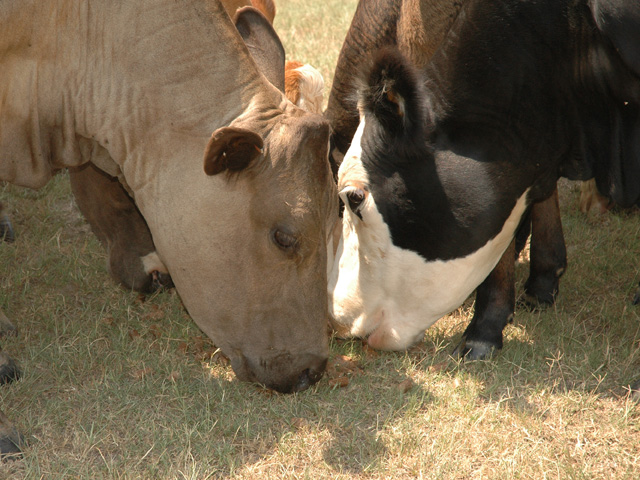Ask the Vet
Supplement Decisions and Data
Question:
We farm in southern Virginia. What is your opinion about protein tubs, specifically for us the 24% protein tubs. They are about 200 pounds and cost around $70 each. Our hay this year was late being cut, and our cows started calving in March.
Answer:
First, let's look at why cows can primarily live off a forage diet. The rumen is what makes cattle, sheep and goats different from simple-stomach animals like humans and pigs. Microorganisms in the rumen break down fiber in forages that simple-stomach animals cannot utilize. The breakdown process produces volatile fatty acids that ruminants capture and utilize nutritionally.
Now, let's look at the concept behind tubs and liquid feeds. Some forages do not have enough readily available nutrients to feed the rumen. This is where tubs and liquid feeds come in. Most of these supplements contain energy sources and a combination of both natural proteins and non-protein nitrogen (NPN) or urea. The microorganisms in the rumen can use this energy and natural protein to digest the fiber in forages, turning that into carbohydrates or energy for their growth. Not only can they take nondigestible carbohydrates (fiber) and use them for energy, but they can hook NPN onto carbohydrate molecules to make proteins. This digestive process not only extracts more energy and proteins from the forage, it does it faster so forages "pass through" the cow quicker, which allows them to eat more forage.
There are many forms and formulations of tubs and liquid feeds. Cost of the tub is not a good way to judge the value of the product. Some less-expensive tubs have a higher moisture content and are less nutrient-dense. Nutrient quality is often lower. So, cattle may eat more of these blocks and still receive less nutrition than the more "expensive" blocks or supplements. It is important to look at how much it will cost you to feed any supplement on a "per head, per day" basis. Also consider how cattle perform on that supplement. Often the less-expensive supplement ends up costing more to feed, and it leads to lower production. That has a direct effect on profitability.
Part of the profitability issue is asking yourself if the supplement is appropriate for your unique operation. I recommend getting your hay tested so you know its nutrient quality. Tubs and liquid feeds offer a convenient, cost-effective method of supplementation, but if your hay is very low in total digestible nutrients (TDN) and crude protein, traditional supplemental feed may be a better alternative.
If you are going to use these products, you should always start while cattle are still in good body condition, usually just prior to calving. The ideal is probably a body condition score (BCS) of 6 on a scale of 1 to 9. If cattle have a BCS of less than 6 (certainly if it's less than 5), traditional supplemental feed is the better way to increase body condition.
Remember, playing catch-up with BCS is always costly both in feed expenses and production decreases. In most cases, tubs and liquid feeds alone won't provide adequate nutrition for growing cattle. In my experience, I would also extend that to the "wet 2-year-old" who is still trying to grow, raise a calf and breed back.
In the end, the only way to really answer your question is to start with the data. Test your hay. Establish a BCS on those females, and then consider your nutritional goals and the best, most economical, way to reach them. Always remember you have a valuable resource in your herd veterinarian, as well as your Extension beef specialist.
(c) Copyright 2021 DTN, LLC. All rights reserved.
P[L1] D[0x0] M[300x250] OOP[F] ADUNIT[] T[]






